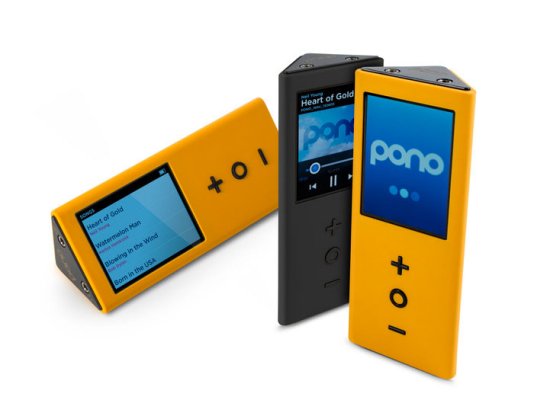I read a forum where it was described as an expensive, glorified FLAC player, which most smart phones can play already.
Not a reasonable comparison at all. Your phone might play FLAC format, but does it have a 24 bit, high quality DAC and audio path? No way, a phone will have the cheapest, lowest power consumption 16 bit DAC they can fit in the phone. A Smart Car and a Lexus both have 4 tires and are street legal - that doesn't mean that the Lexus is just an expensive, glorified Smart Car, there are real differences in implementation. They both might get you to your destination, and if that's all you want the Smart Car might be the answer for you. But no way are they the same.
Neil Young has been working on an improved music format for several years, I have not kept track of the details. I'm pretty sure the main thrust of the new format is to preserve the dynamic range of music.
As mentioned in the other Audio thread, source material matters a lot, your fabulous speakers reproduce what is sent to them.
This is a crying shame: also led to the rediscovery of vinyl
What Happened To Dynamic Range?
Loudness war - Wikipedia, the free encyclopedia
Here is a $5 sampler album of various tunes you can download to checkout:
Audiogon Presents The Wake Up your Ears Sampler
Interesting info there, so I just learned that these higher definition DACS
are supported natively on Linux and Mac OSX as part of the USB Audio Class 2 spec (special drivers still needed for Windows for some odd reason - they don't support the USB spec natively?). I hate special drivers, so that was holding me back.
Here's one list of HD DACS:
24/192 USB DACs (a list) | AudioStream
There is still the question of whether I would hear/feel the difference, and source material is somewhat limited and more expensive. But it's tempting - some of these DACs are in the $2-$300 range, not a budget breaker.
Also to be clear, Neil Young has not been working on an improved music format - the FLAC format is open source and was developed separately and supports these extended formats. Neil is just pushing/advocating this existing file format.
I have CDs, HDCD, SACD, CD with various sampling rates, "gold" CDs, etc.. Sound quality difference among those are (too) subtle for normal listeners and hardly does anything with inferior equipment. What makes the most difference is how a music is recorded and transferred with care to digital format. Some of the best sounding CDs are digitized from their original 1950 recordings. And I have some SACDs which are done pretty badly. At the end of the day, enjoy the music and not the format or equipment for that matter.
I totally agree that the source recording is key. But I'm curious if you felt you could hear the difference with SACD or HDCD. I have one hybrid SACD and a player, and I'm not certain I can tell. Maybe a bit more 'life' and 'air', or maybe just a mind trick. But I'm leaning towards feeling there was a subtle difference, but one that made the music more enjoyable.
I read a review on Ars Technica or some such place that pointed out two problems: 1) The files are stupendously large. So large that even with cheaper storage it will cost in money and size for some time to come. 2) The rate Neil has chosen is far beyond our ability to hear and thus noticeable quality improvements depend on speculative theories as to why we could sense them. The article also argued that current CD level essentially exhausts the hearing range but ERD's reference may indicate otherwise. ...
I don't think 'stupendously large' file size is an issue at all. If you are interested in quality, you are not compressing your music past CD quality, so that is the base-line. So a 44.1x16 versus 48*24 or 96*24 is only a 1.6x and 3.3x increase in file size. Even the 'ultra-high' is 6.5x.
With multi-TeraByte HDDs availabale for <$100 I just don't think that's an issue. Two TB will store > 6,000 FLAC CD quality, so still around 2,000 CDs at their 'higher' resolution.
From PONO:QUOTE]
• CD lossless quality recordings: 1411 kbps (44.1 kHz/16 bit) FLAC files
• High-resolution recordings: 2304 kbps (48 kHz/24 bit) FLAC files
• Higher-resolution recordings: 4608 kbps (96 kHz/24 bit) FLAC files
• Ultra-high resolution recordings: 9216 kbps (192 kHz/24 bit) FLAC files [/QUOTE]
As you mention, I'm not convinced the higher formats will be noticeably better to me, but I can make a reasonable case that CD quality is somewhat 'marginal'. From a glass-half-full view, I appreciate that the CD standard was at least 16/44.1 - considering the popular mp3 format that came later, I'm surprised marketing didn't push for a lower Q format.
Although it might sound funny to speak of the 'air' in a good recording, I think it is very real, and is something you can miss in compressed music. Our ears/minds are very sensitive and selective. You can locate a sound w/o even thinking about it. How do you do that? You are hearing little 'hints' like the delay in a sound (the slightly different time it takes to travel different paths), and the echos which are way down in level from the main sound - but we still hear them. These are the details that can get thrown away by the compression algorithms. And I suspect that 16/44.1 doesn't faithfully capture all of them either, but it gets pretty darn close.
-ERD50


